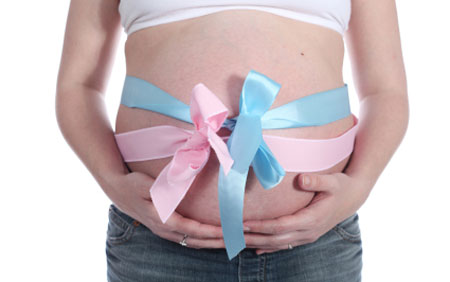 Women having twins are more likely to suffer certain pregnancy complications than women who have only one baby. High blood pressure of pregnancy is one of these complications and it tends to be worse in identical-twin pregnancies. In order to detect this early, we need to monitor the woman’s blood pressure. Testing the urine can also help identify the development of this disease by the appearance of protein. Sometimes the mother needs to take medication to stabilise her blood pressure. The mother may need hospitalisation if the blood pressure remains unstable or the babies appear to be suffering from poor growth. Sometimes they need to deliver the babies early. This will stop them from being further affected
Women having twins are more likely to suffer certain pregnancy complications than women who have only one baby. High blood pressure of pregnancy is one of these complications and it tends to be worse in identical-twin pregnancies. In order to detect this early, we need to monitor the woman’s blood pressure. Testing the urine can also help identify the development of this disease by the appearance of protein. Sometimes the mother needs to take medication to stabilise her blood pressure. The mother may need hospitalisation if the blood pressure remains unstable or the babies appear to be suffering from poor growth. Sometimes they need to deliver the babies early. This will stop them from being further affected
Pregnancy complications: Preterm labour and birth are much more common in twin pregnancies.
In Australia in 2009 (Australia’s Mothers and Babies, AIHW, 2011) the overall rate of preterm birth (birth before 37 weeks) amongst women pregnant with one baby was 6.6%. For women pregnant with twins it was 52.2%. One in fifteen twin births occur before 32 weeks gestation.
The majority of twins, however, appear to be born around thirty-seven weeks. Similarly the incidence of having a baby with a low birth weight (less than 2500gms) was 4.7% for single pregnancies and 51.3% for twin pregnancies. Ongoing ultrasound assessment is often recommended to determine that the babies are growing adequately. For many years bed rest was recommend for women having twins. The idea behind this was it would reduce the rate of preterm birth and the baby’s growth. Unfortunately, this was done without evaluating whether it was an effective treatment.
Studies done have now indicated that it can in fact be harmful and hospitalisation and bed rest increases the rate of preterm birth less than 34 weeks and the rate of very low birth weight babies. There are some cases where hospitalisation and bed rest may be appropriate but for the majority of women it is of no benefit
Twin-to-twin transfusion syndrome
Pregnancy complications – The risk of a dangerous condition called twin-to-twin transfusion syndrome (blood flows from one twin to another) is increased in identical twins where the placenta is shared. This can lead to one large twin who gets most of the blood supply and one small twin who gets less blood supply. It can also lead to an increase in the fluid around the babies. Using treatments like laser therapy to stop key blood vessels communicating between the babies can help reduce the associated serious problems. Fluid around the babies can also be reduced if it builds up too much.
Published 13th July 2012


Recent Comments